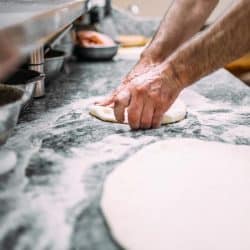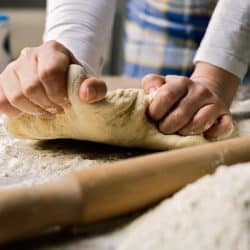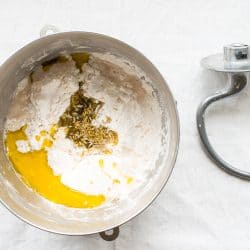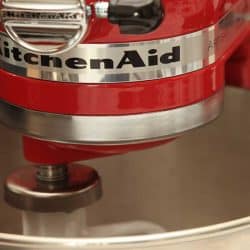Food processors are the epitome of multifunctionality in the modern kitchen. These compact yet powerful appliances can tackle most jobs that would require several minutes for a human to do by hand in a matter of seconds or minutes. Perhaps you are a baker and wondered how long the kneading process takes in a food processor? We've thoroughly researched this topic and have highly productive information to share with you!
The food processor blades spin at thousands of RPMs versus the couple hundred RPMs a traditional stand or hand mixer offers at its highest settings. Hence, these small appliances can accomplish 8-10 minutes of hand kneading in approximately 1-2 minutes or less. Some recipes may require less or more time depending on the ingredients.
Are you interested in learning how to knead dough in a food processor quickly? Considering purchasing a new food processor and wondering which one is best for making baked goods and treats? Please continue reading; we have a lot of helpful information to share with you.
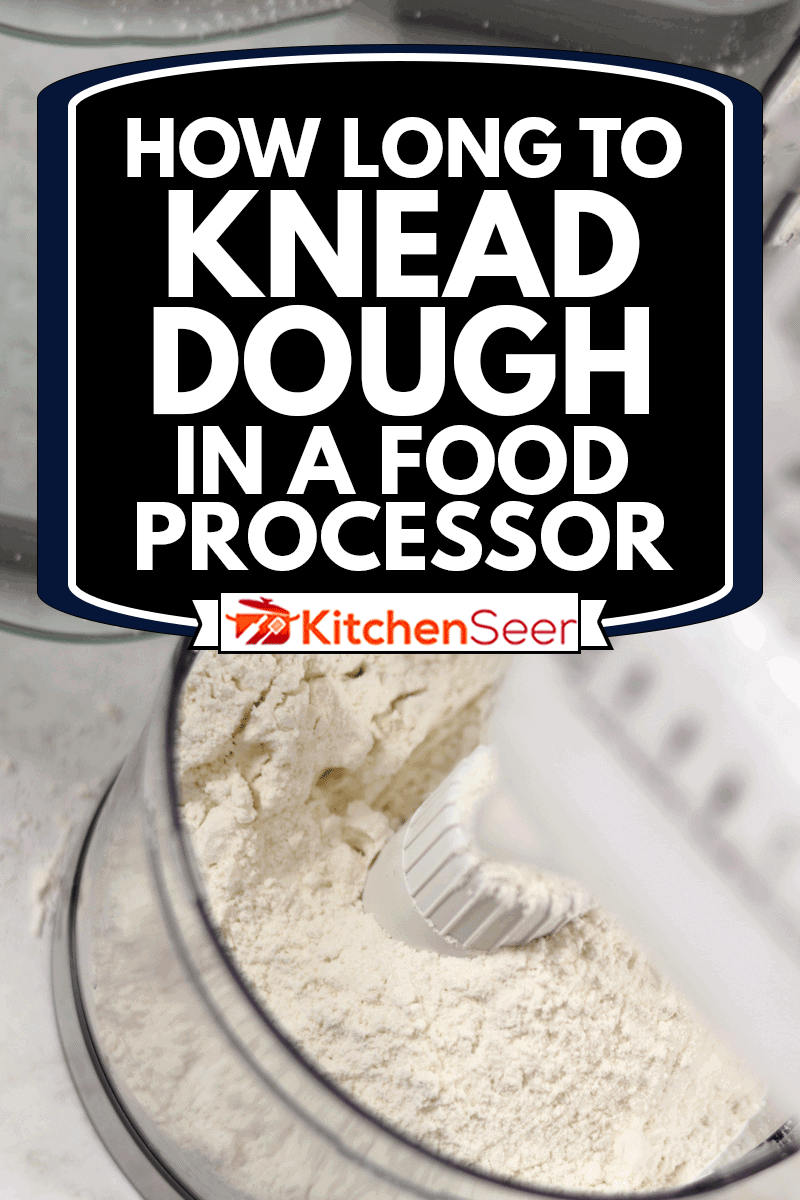
How to knead dough in a food processor?
According to Cook's Illustrated, to successfully knead dough in the food processor, begin by placing all of the dry ingredients into the mixing bowl. Gently tap the pulse button for about five seconds to mix the dry ingredients. Next, slowly pour cool water through the feeding tube while the processor is running--continue until the dough is formed into a satiny, soft-to-touch ball that has cleaned the inside of the bowl.
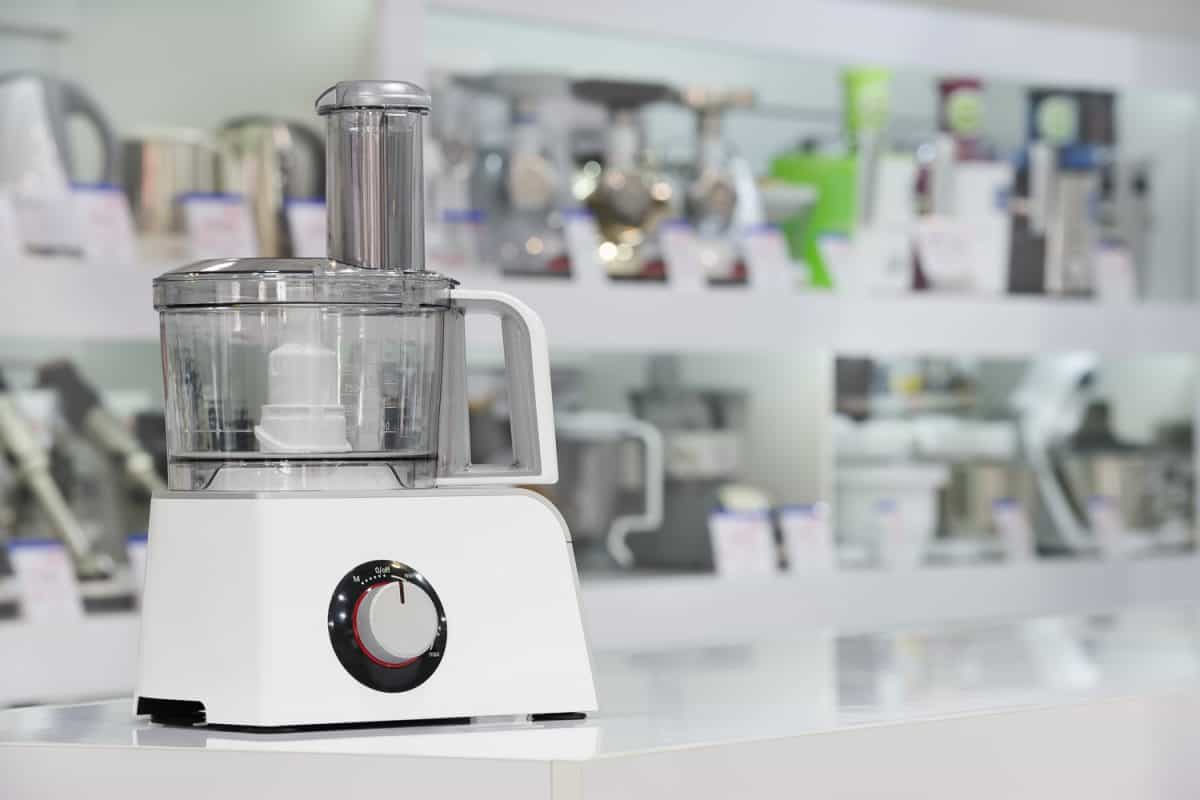
After 45 seconds of mixing, and the dough is sticking to the blades and sides of the bowl. Add a tablespoon of flour and mix until a small dough ball forms. If the dough is dry and crumbly, add another tablespoon or two of cool water, this should help create a well-formed dough ball.
Flour is an essential ingredient for making doughs. Have you wondered which flour brands are best for baking or if the brand matters? Click here to read our article about this topic.
Does the Kitchenaid food processor knead dough?
Yes, Kitchenaid food processors can knead dough; and most models come with a dough blade that was purposefully engineered for kneading doughs. Insert the dough blade in the same method as the all-purpose blade. It is advisable to always use the dough blade for bread doughs because it is made of plastic that doesn't heat from friction like the steel blades do. The heat generated in the processor heats the metal blades; this could destroy the yeast, which will prevent the bread from rising.
Click here to view the KitchenAid 13-cup food processor with a dough blade at Amazon.
Can you knead dough in a Magimix?
The Magimix food processors do have the ability to knead bread dough. Generally, it requires 60-90 seconds to knead the dough after mixing. Word of advice- use the dough blade for bread recipes in the Magimix. Click here to view the Magimix food processor with a dough blade at Amazon.
What is the best food processor for making dough?
According to the Chicago Tribune, after rigorous testing, they decided that the Cuisinart 14-cup was the best food processor for kneading doughs and efficiently chopping, mincing, and pureeing an array of ingredients. Also, the base is somewhat heavier than other models on the market. The heaviness of the base is helpful when kneading doughs because it won't wobble on your countertop.
The Good Housekeeping Institute’s Kitchen Appliances and Technology Lab awarded Cuisinart 14-cup food processer the most popular food processor on Amazon 2021. It performed with ease as the researchers tested its ability to chop onions, mince parsley, grate cheese, and knead bread doughs. Click here to view Cuisinart's 14-cup food processor at Amazon.
Interested in learning more ways to utilize your food processor? Click here to view The Food Processor Family Cookbook: 120 Recipes for Fast Meals Made From Scratch at Amazon.
How do you tell if you've over kneaded dough?
Taste of Home states that if bread doughs have been over-kneaded, they will become tough and reluctant to stretching. Once the dough has reached this point, it will yield overly chewy and coarse slices of bread.
Generally, this issue occurs when the dough gets over-kneaded in food processors and stand mixers. The reason is that the speed of the blades and beaters will quickly over-knead and ruin the gluten structures within the dough in seconds.
Methods to avoid over-kneading bread dough
Using chilled water for mixing the dough helps keep the dough cool, and that will help diminish the risk of over-kneading. Another option is once the dough is mixed. Knead the dough for 30 seconds on the low setting. Recheck the dough elasticity. Knead on low for another 15 seconds and recheck the condition of the dough. Add a few more seconds if needed. Otherwise, remove it from the mixing bowl for its rest period.
If over kneading is of great concern, remove the dough from the mixing bowl once all the ingredients are mixed and complete the kneading process by hand. It would be difficult to over-knead the dough when you are monitoring it in your hands.
Bakers' techniques to tell if the bread is kneaded enough
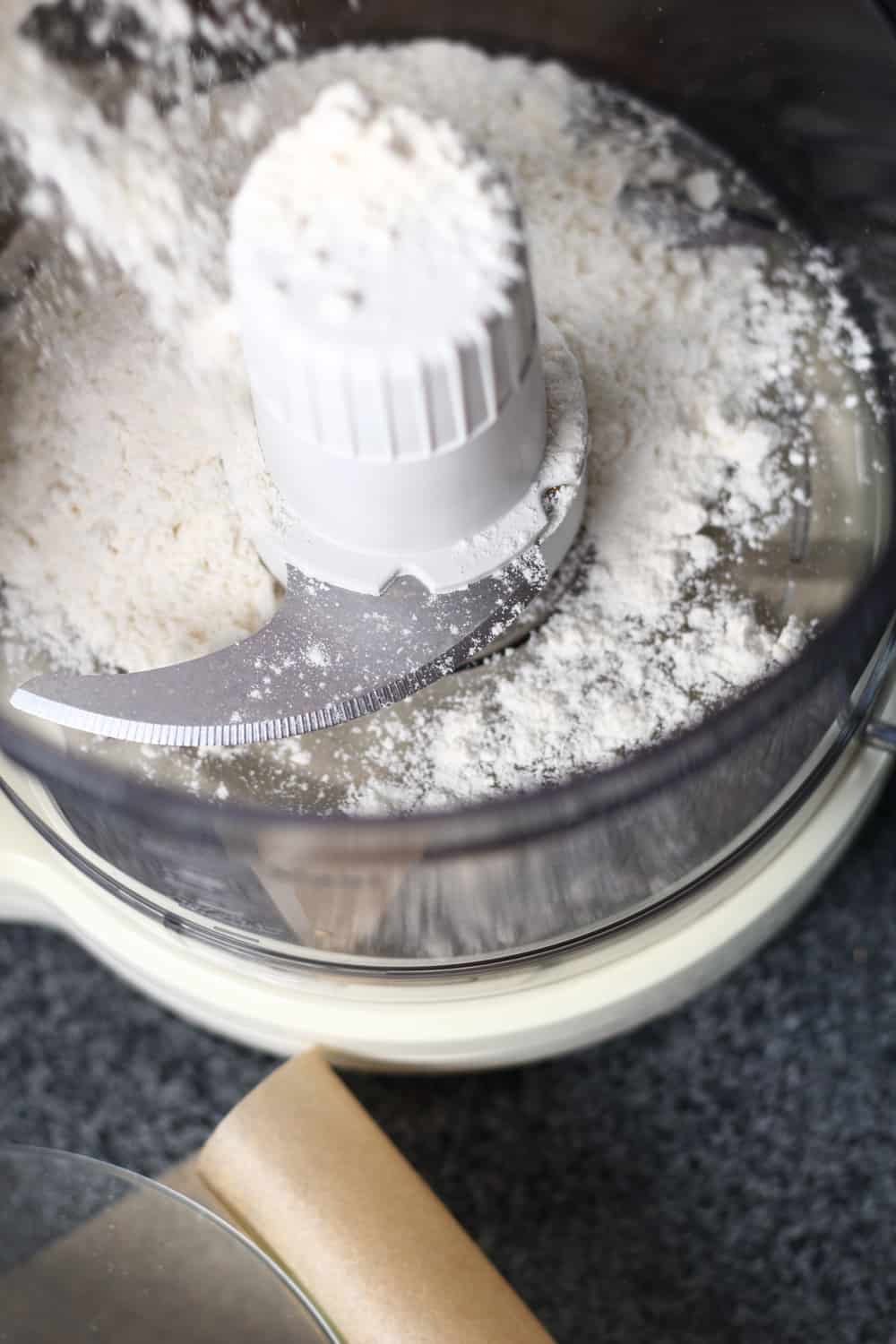
The bread dough will give the baker plenty of clues to determine if it has received ample kneading. One of the hallmark signs to look for is if the bread dough has a visible light shiny hue. Also, another prominent sign is the dough has a soft and smooth texture.
Moreover, to check the elasticity of the dough, simply poke a small indentation with your index finger; if the hole remains for a bit, the dough needs more kneading. If the indentation disappears quickly, the dough is ready to rest.
The windowpane test
Professionals and home cooks rely on the windowpane test to test the consistency of the dough and if it was kneaded properly. Remove a small piece of dough and stretch it in between your fingers. If it tears, the gluten content is underdeveloped and requires more kneading. Suppose the dough stretches easily without breaking; the dough has been kneaded sufficiently and is ready to rest. Click here to view BPA-free mixing bowls at Amazon.
What size food processor for bread dough?
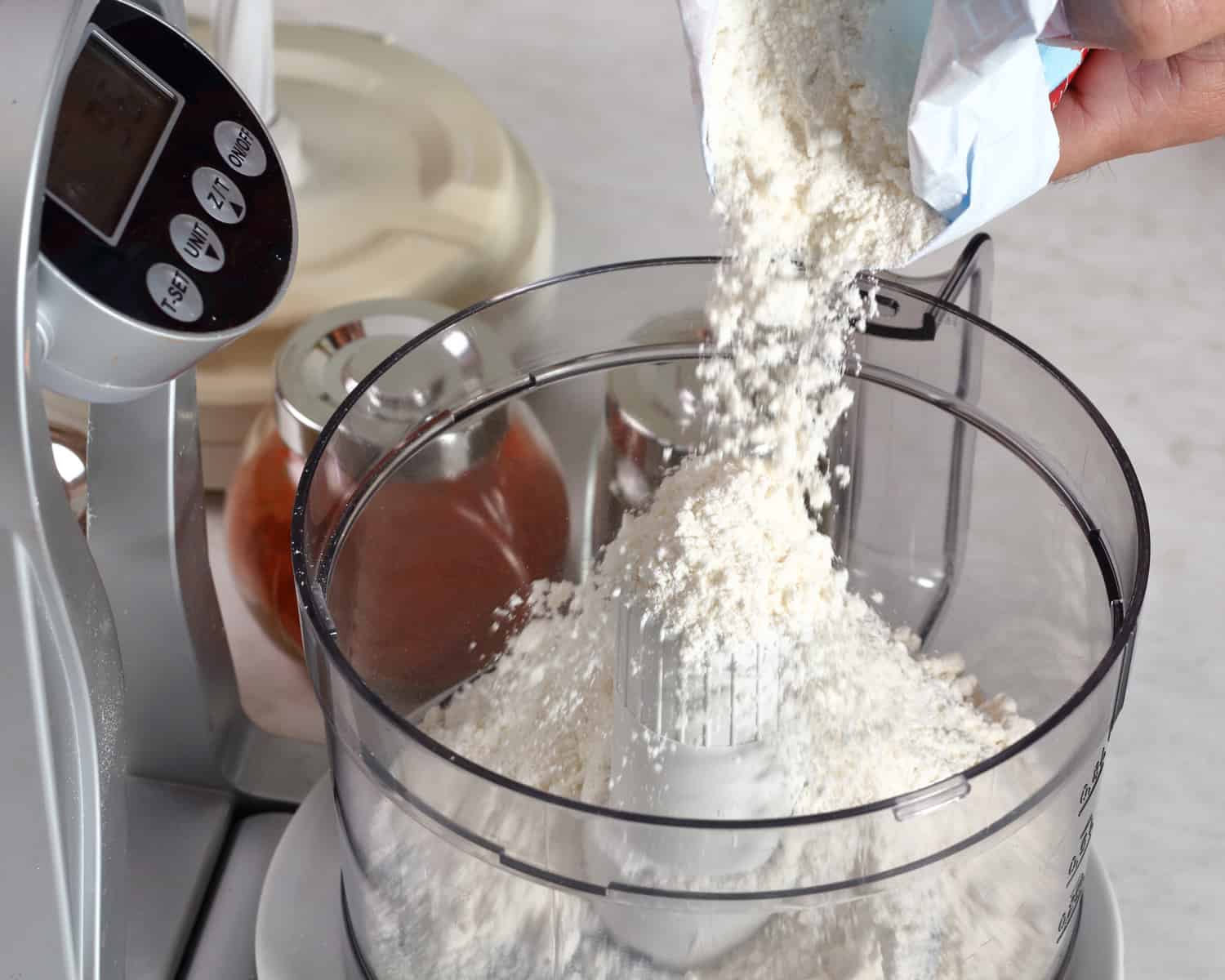
The average size of a mixing bowl present in most food processor models is 10-12 cup capacity. This allows for mixing about 1 1/2 pounds of dough without the risk of overcrowding the mixing bowl or overworking the blades. One and a half pounds of dough are comprised of 2 to 3 cups of flour which equates to one standard bread loaf.
If you would like to make a double batch (two loaves), you could mix two separate batches back-to-back and bake both simultaneously. To save time, pre-measure the dry ingredients for both batches into separate mixing bowls. Also, chill enough water for both batches in the refrigerator.
Once the first loaf is mixed, place it in a bowl, and cover. Immediately pour the prepped dry ingredients into the mixing bowl, and in minutes you will have two bread doughs resting.
Suggestions for making bread doughs in a food processor
Food processors offer much assistance to the busy cook in home and professional settings. However, mastering the art of using these small appliances requires time, similar to any other skill. Here are a few suggestions that will make mastering these skills a bit easier.
- Always use chilled water to keep the dough cool in the presence of hot blades.
- Do not add all the ingredients at once. Dry first, and slowly add the liquids.
- Always place the food processor on a sturdy surface when in use.
- Check the elasticity of the dough often to avoid over-kneading.
- Start with pressing the pulse button for five seconds for the initial mixing of dry and wet ingredients.
Safety precautions for food processor usage
- Don't wear loose-fitting clothes while operating the food processor.
- Keep hair tied back or tuck it under a cap.
- Never wear a tie or long necklace.
- Keep small children and pets out of the kitchen while using the food processor.
- Do not leave the food processor plugged in unattended.
- Keep the cord away from stovetops or other hot surfaces.
- Do not allow the processor to sit near any standing water.
- Wear cut gloves when washing or handling the blades.
In closing
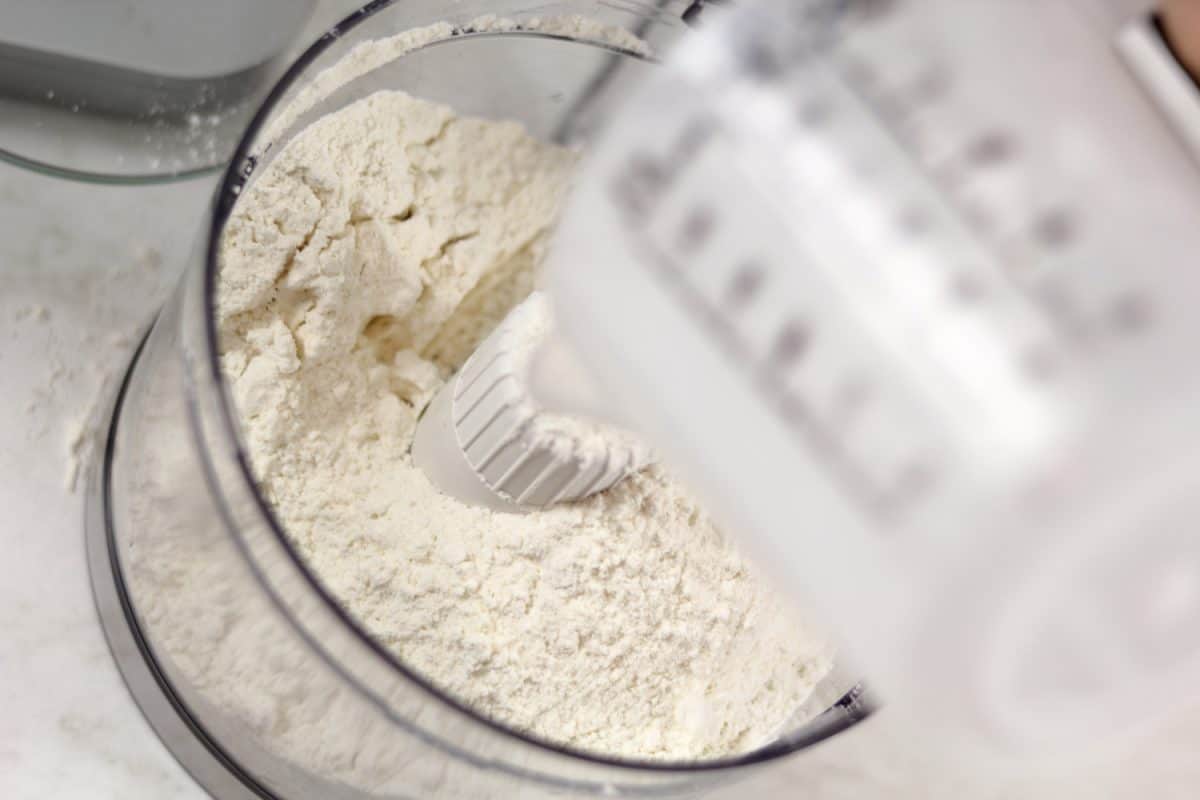
Baking bread is a rewarding pastime that yields nutritional benefits for you and your loved ones. Investing in a food processor will dramatically cut down on time and physical labor needed to produce healthful homemade loaves of bread.
We hope this article has helped you gain a few tips for baking your next loaf of bread. Please visit KitchenSeer.com soon for more helpful and inspiring content!
Be sure to check out some of our other posts to help further your culinary knowledge base:
The 6 Best Ways To Store Bread






![Baker man hands breadmaking kneading bread dough, How Long To Knead Bread [By Hand And In A Mixer]](https://kitchenseer.com/wp-content/uploads/2021/03/Baker-man-hands-breadmaking-kneading-bread-dough-250x250.jpg)
